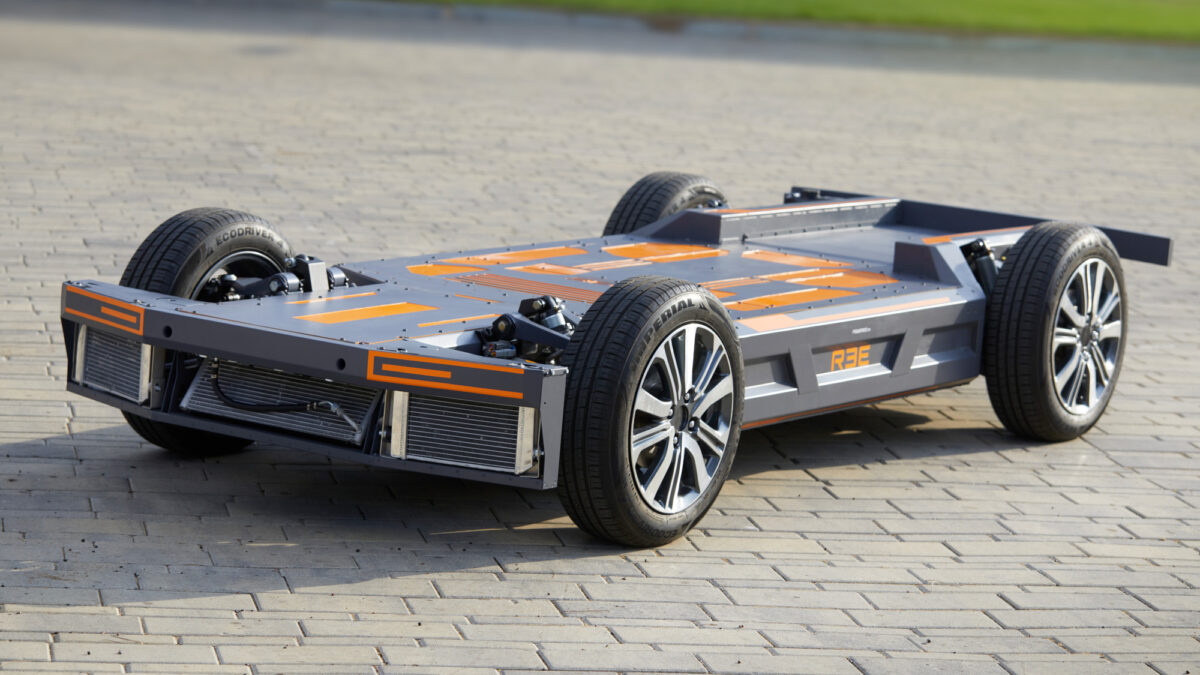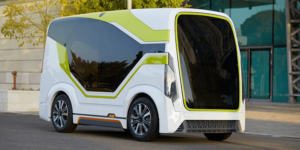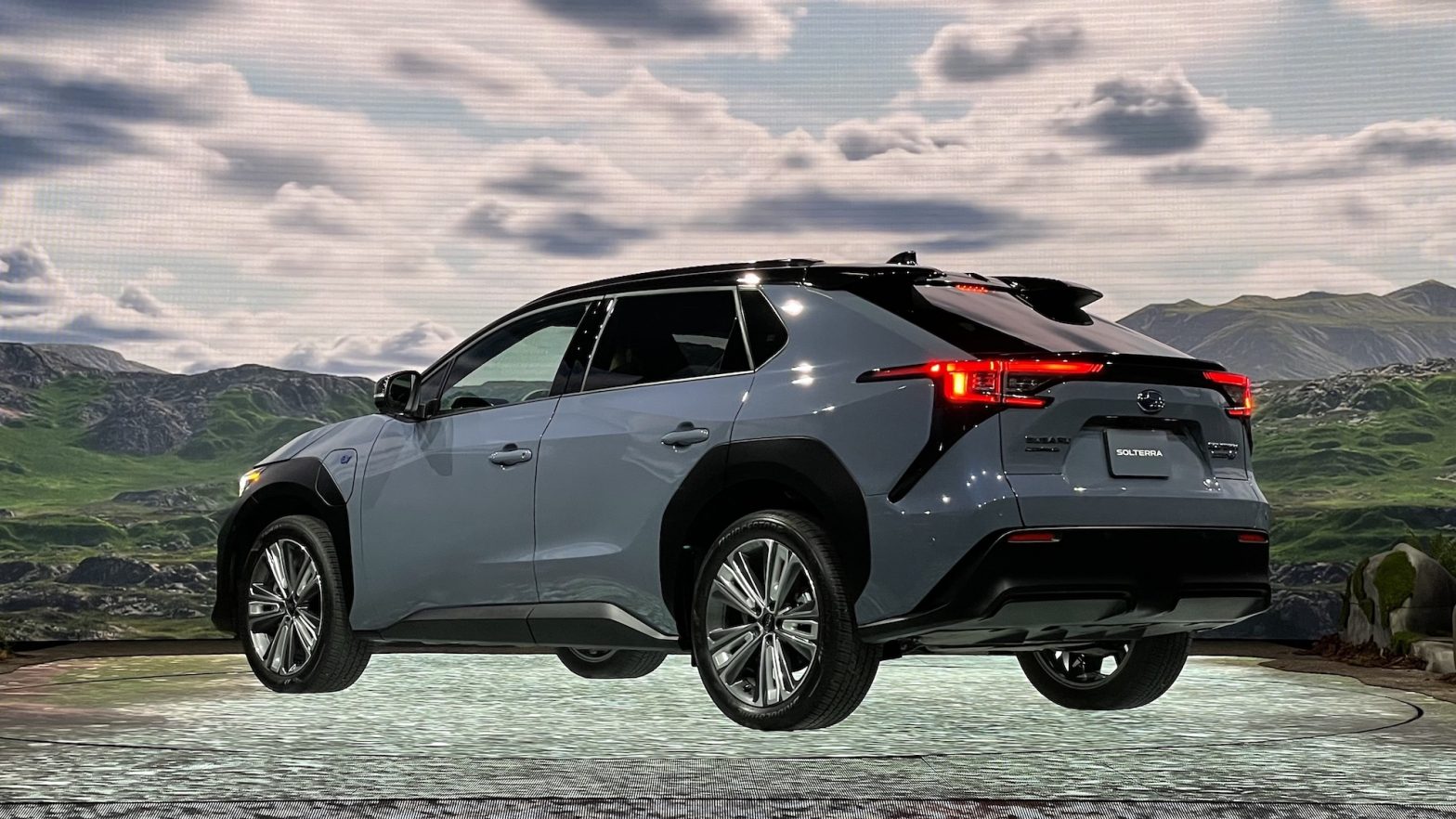SOUTHFIELD, Mich., Nov. 19, 2021 /PRNewswire/ — Ford Motor Company and DENSO have received an Automotive Innovation Award from the Society of Plastics Engineers’ (SPE) Automotive Division. They earned the honor for their alliance to produce respirators for frontline workers battling COVID-19. It was a project that represented unprecedented mobilization across the companies to ramp up new… Continue reading DENSO Receives Automotive Innovation Award for Collaboration with Ford Motor Company on Respirator Components
Tag: Toyota
@niche: Ree unleashes autonomous Leopard EV for last-mile delivery001433
Ree Automotive has announced the Leopard, a skateboard design electric vehicle (EV) for autonomous last-mile delivery and passenger transport. The Herzliya, Israel-based company will showcase the Leopard at the upcoming Consumer Electronics Show in Las Vegas in January. The company is opening a U.S. headquarters and integration center in Austin, Texas. “This concept showcases just… Continue reading @niche: Ree unleashes autonomous Leopard EV for last-mile delivery001433
@niche: REE Automotive reveals the autonomous Leopard & new platform001432
REE Automotive has revealed its autonomous concept vehicle Leopard, based on a new ultra-modular EV platform design. REE Automotive says that their full-scale concept is designed to be flexible for tailoring towards customer needs including last-mile autonomous and delivery fleet operators, retailers and technology companies wanting to build fully autonomous solutions. REE Automotive envisages fully-autonomous… Continue reading @niche: REE Automotive reveals the autonomous Leopard & new platform001432
Subaru’s first all-electric vehicle makes its American debut
Subaru pulled the cover off its first all-electric crossover for the second time in November. This time, the 2023 Subaru Solterra electric crossover — the Toyota bZ4X doppelgänger — made its U.S. debut at the Los Angeles Auto Show. The first all-electric subcompact crossover is a joint project, like the Subaru BR-Z and the Toyota… Continue reading Subaru’s first all-electric vehicle makes its American debut
Apollo eyes premium space with Vredestein
Apollo Tyres plans to go in for a dual brand strategy with the recent launch of Vredestein in India. The company had acquired this Netherlands-based premium brand in 2009. Satish Sharma, President-Asia Pacific, Middle East & Africa, told Autocar Professional that, with its European DNA, Vredestein can compete with the likes of Michelin, Bridgestone, Continental and Pirelli in the Indian… Continue reading Apollo eyes premium space with Vredestein
wuddi Carsharing, the Shared Mobility subsidiary of the BERESA Group, automates internal fleet management in collaboration with Ridecell
wuddi GmbH, as a subsidiary of BERESA Group, one of the largest Mercedes-Benz dealers in Germany, is using the Ridecell Fleet IoT Automation Platform for its car sharing business to improve operations and meet the growing demand for contactless car rentals after the pandemic. MÜNSTER, Germany, 16 November 2021 wuddi and Ridecell Inc., the leading… Continue reading wuddi Carsharing, the Shared Mobility subsidiary of the BERESA Group, automates internal fleet management in collaboration with Ridecell
@Toyota: Toyota Tsusho Launched “Digital X Lab” to Accelerate DX
Toyota Tsusho Corporation (“Toyota Tsusho”) has launched “Digital X Lab” in September 2021 where we accelerate the digital transformation (DX) of the Toyota Tsusho Group by agile*1 validation of transformation ideas with digital technologies through prototyping*2 and encouraging our operation transformation and business creation. In April 2020, Toyota Tsusho newly appointed a CDTO (Chief Digital… Continue reading @Toyota: Toyota Tsusho Launched “Digital X Lab” to Accelerate DX
@Toyota: Collaborative Autonomy for the Farm: Our Portfolio Company Burro is Hiring
In this critical role, you will lead Burro’s engineering team in shipping technology on time, while interfacing with customers and the sales and support team. Reporting to Burro’s chief technology officer, you will collaborate on developing and executing the technical vision for Burro. You are expected to manage and grow the team by fostering a… Continue reading @Toyota: Collaborative Autonomy for the Farm: Our Portfolio Company Burro is Hiring
Autos & Transportation · 9:04 AM UTCHonda Motor asks parts suppliers to reduce carbon emissions, Nikkei reportsHonda Motor has asked its main parts su…
Honda’s logo on its Modulo model is pictured at its showroom at its headquarters in Tokyo, Japan, February 19, 2019. REUTERS/Kim Kyung-hoon TOKYO, Nov 16 (Reuters) – Honda Motor (7267.T) has asked its main parts suppliers to reduce carbon emissions annually by 4% versus 2019 levels, the Nikkei daily reported on Tuesday. The Japanese carmaker… Continue reading Autos & Transportation · 9:04 AM UTCHonda Motor asks parts suppliers to reduce carbon emissions, Nikkei reportsHonda Motor has asked its main parts su…
@Mazda: 000417
IRVINE, Calif. (November 15, 2021) – Mazda North American Operations today hosted the virtual world premiere of the first-ever Mazda CX-50. A completely new model, CX-50 is the first Mazda vehicle to be built at the new Mazda Toyota Manufacturing (MTM) plant in Huntsville, Alabama, with production beginning in January 2022. “This new Mazda vehicle… Continue reading @Mazda: 000417



